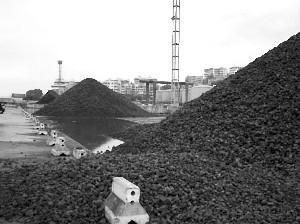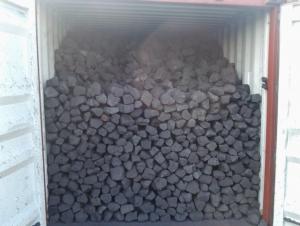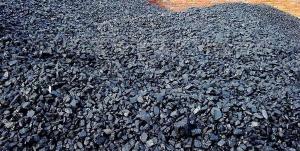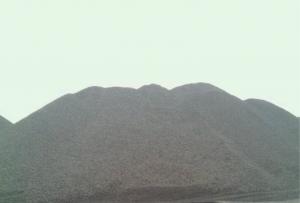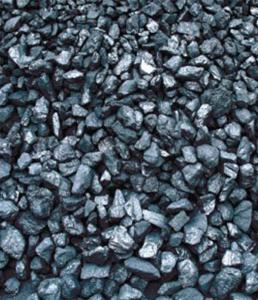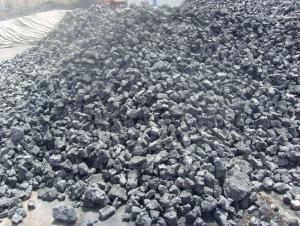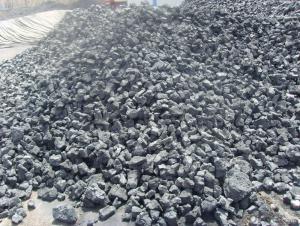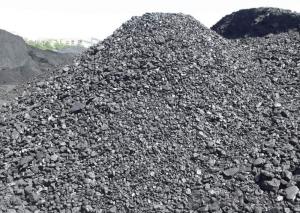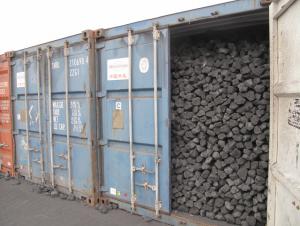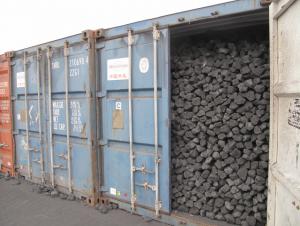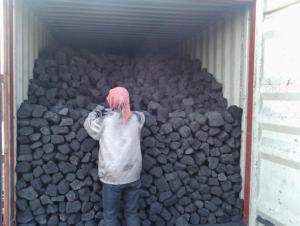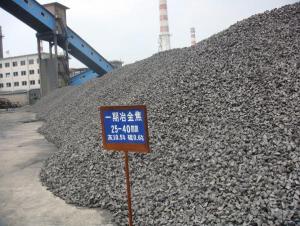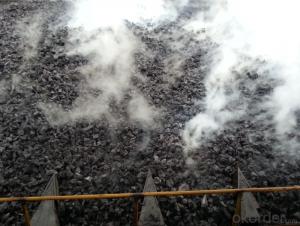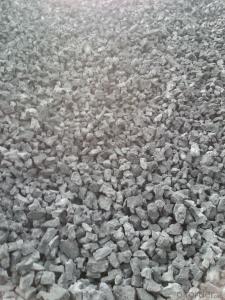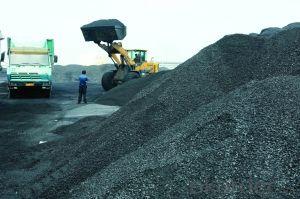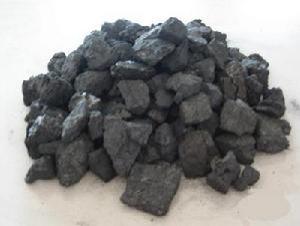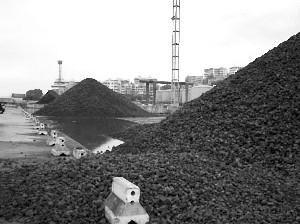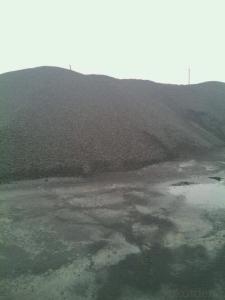Metallurgical Coke of Coke Strength after Reactivity 64
- Loading Port:
- Tianjin
- Payment Terms:
- TT OR LC
- Min Order Qty:
- 100 m.t.
- Supply Capability:
- 3000 m.t./month
OKorder Service Pledge
OKorder Financial Service
You Might Also Like
1. Structure of Metallurgical Coke of Coke Strength after Reactivity 64 Description:
Coke is made by high temperature metallurgical coke for blast furnace smelting, casting and gasification. Occurring in the process of coking after recovery and purification of coke oven gas is a high calorific value of fuel, is an important industrial raw material in organic synthesis.
Coke is mainly used for blast furnace ironmaking and used for copper, lead, zinc, titanium, antimony, mercury and other non-ferrous metal smelting of blast furnace, reducing agent, compound and the function of stock column frame.
Blast furnace with Coke instead of charcoal, which laid a foundation for the large-scale of modern blast furnace, is a major milestone in the history of metallurgy.
2. Main Features of the Metallurgical Coke of Coke Strength after Reactivity 64:
• Quality assurance
• Mutual benefit
• Preferential price
• Various choice
3. Metallurgical Coke of Coke Strength after Reactivity 64 Images:
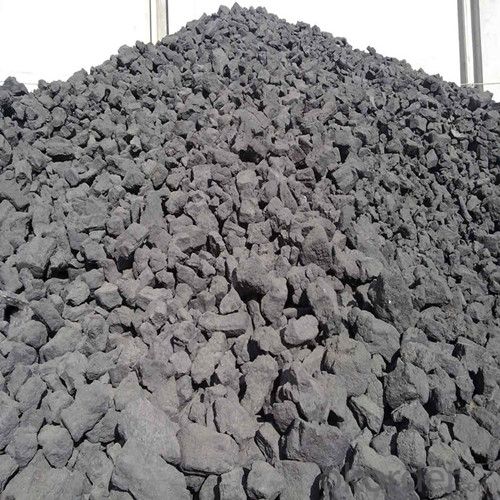
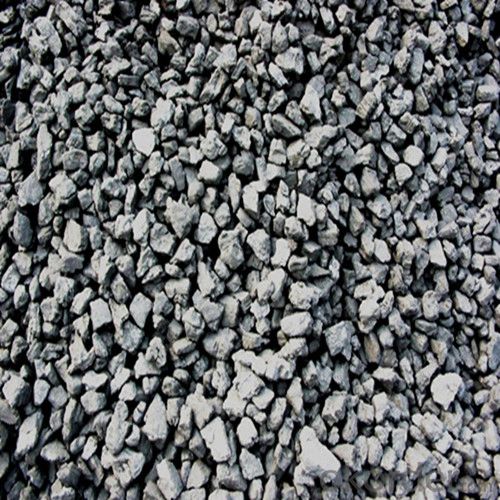
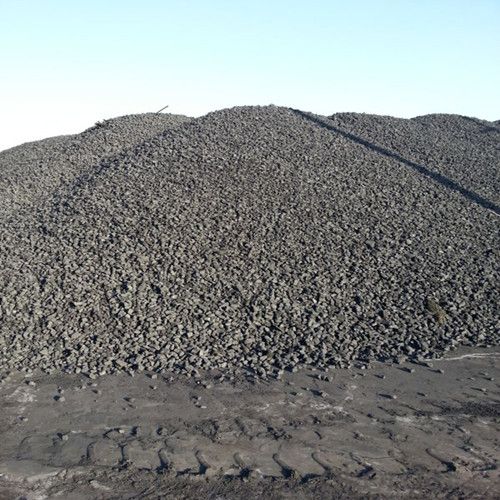

4. Metallurgical Coke of Coke Strength after Reactivity 64 Specification:
Parameters | Guarantee | Rejection |
Total Moisture (As received basis) | 5% max | |
Ash (dry basis) | 12.5% max | > 13.5% |
Volatile Matter (dry basis) | 1.5% max | > 1.8% |
Sulphur (dry basis) | 0.65% max | > 0.75% |
Phosphorus (dry basis) | 0.035% max | > 0.045% |
M10 | 7% max | > 9% |
M40 | 84% min | <82% |
CSR | 64% min | <62% |
CRI | 26% max | > 28% |
Size 30-90 mm | 90% min | |
+90 mm | 5% max | > 8% |
-30mm | 5% max | > 8% |
5. FAQ
We have organized several common questions for our clients,may help you sincerely:
1) How to guarantee the quality of the products?
We have established the international advanced quality management system,every link from raw material to final product we have strict quality test;We resolutely put an end to unqualified products flowing into the market. At the same time, we will provide necessary follow-up service assurance.
2) What are coke's main physical properties?
The average heat capacity is 0.808 kj/(KGK) (100 ℃), 1.465 kj/(KGK) (1000 ℃)
Thermal conductivity is 2.64 kj/(MHK) (room temperature), 6.91 kj/(MHK) (900 ℃);
Ignition temperature (air) is 450-650 ℃.
3) How about your company?
Our company began to export coke when China cancelled 40% of coke export tariffs and quotas on January 1, 2013. We export many kinds of coke, such as CSR60 % and CSR 62% metallurgical coke (met coke), the NUT coke of 20 to 50 mm, coke breeze of 3 to 6 mm, and so on.
- Q:I now do a good job in the coke network editor, I would like to know more about coke
- Direct reduction in the blast furnace in the area above 850 degrees celsius. Because the CO2 generated at high temperature immediately reacts with the carbon in coke to form CO, it can be considered that the carbon in coke is directly involved in the reduction process:CO is used as reducing agent, either indirect or direct reduction. In order to continue to add CO, requires a certain degree of reactivity of coke.
- Q:What is the difference between metallurgical coke and chemical coke
- Quality index of cokeCoke is a solid product of high temperature carbonization, the main component is carbon, is a crack and irregular pore structure (or porous). The number of cracks has a direct impact on the strength and crushing strength of the coke, the index is generally measured in terms of crack degree (the number of cracks in the unit volume coke). The index of pore structure is mainly expressed by the porosity rate (the percentage of the total volume of coke), which affects the reactivity and strength of coke. Different uses of different coke porosity index requirements, the general requirements of metallurgical coke porosity in the 40 ~ 45%, 35 ~ 40% in coke, coke export demand in about 30%. Coke crack degree and the porosity level, and the coking coal has a direct relationship, such as coal based coke refining, crack, high porosity, low strength; with coal as the foundation of the coal refining coke crack less, low porosity and high strength. The strength of coke is usually represented by two indices of crushing strength and abrasion resistance. Coke crushing strength refers to coke can resist foreign impact force without ability along cracks or defects at the broken, represented by the M40 value; wear strength of coke coke refers to the ability to resist external friction without surface of glass forming debris or powder, said M10. The cracking degree of coke affects the M40 value of its breaking strength, and the pore structure of coke affects the M10 value. There are many methods for determination of M40 and M10 value method, commonly used in our country the German migon drum test.
- Q:The cost of iron ore and coke
- At present the general level of building materials enterprises, the price of 2400 yuan / ton steel
- Q:What is the reasonable ratio of coal to coke
- There are lignite, bituminous coal, anthracite, semi anthracite these categories. Under the condition of isolated air, the bituminous coal is heated to 950-1050 DEG C, and finally, the coke is made by drying, pyrolysis, melting, bonding, solidification and shrinkage.
- Q:Distinction and distinction of cokeSoil coke, improved coke, coke machine coke do, what is the difference between
- Two, the type of coke:Coke is usually divided by use of metallurgical coke (including blast furnace coke, coke and iron alloy coke, calcium carbide and coke gasification etc.) with coke. The pressurized pulverized coal forming coal, coke carbonization etc. in the new postprocessing process called Formcoke.1, metallurgical coke, metallurgical coke is coke, coke, iron alloy coke and non-ferrous metal smelting coke for metallurgical coke collectively. More than 90% are used in blast furnace, the furnace coke often called metallurgical coke.The metallurgical coke quality standard (GB/T1996-94) made in China is the quality standard of blast furnace
- Q:What are the companies that produce coke
- Too many enterprises to produce coke. You search on Baidu, coke, a lot of business
- Q:What is the use of coke
- The physical properties of the coke coke coke screening composition, physical properties including bulk density, coke coke coke true relative density, apparent relative density and porosity of coke, coke, coke, thermal conductivity and specific heat of coke thermal stress, ignition temperature of coke, coke, coke thermal expansion coefficient of shrinkage, resistivity and permeability of coke coke. The physical properties of coke are closely related to its mechanical strength, thermal strength and chemical properties at room temperature. Following the main physical properties of coke: true density is 1.8-1.95g/cm3 0.88-1.08g/ cm3; apparent density; porosity is 35-55%; bulk density is 400-500kg/ m3; the average heat capacity is 0.808kj/ (KGK) (100 C), 1.465kj/ (KGK) (1000 DEG C); the thermal conductivity is 2.64kj/ (MHK) (room temperature), 6.91kg/ (MHK) (900 DEG C); ignition temperature (air) is 450-650 DEG C; dry ash free calorific value is 30-32KJ/g;
- Q:Effect of coke powder ratio on the index
- Evaluation of coke quality1, coke: sulfur sulfur is a harmful impurity, pig iron smelting, which makes it one of the iron quality. In steel and iron sulfur content greater than 0.07%, is a waste. From the 11% blast furnace of sulfur ore; 3.5% limestone; 82.5% from coke, so coke is the main source of sulfur. The charge directly affects the coke into blast furnace of sulfur when the sulfur content of coke production. For more than 1.6%, 0.1% sulfur, each additional 1.8%, increase the amount of coke, an increase of 3.7%, ore blast volume added limestone to reduce the yield by 0.3%, sulfur content of 1.5 - 2% metallurgical coke requirements do not exceed 1% 0.7%., the sulfur content of metallurgical coke is less than - 0.4 large and medium sized blast furnace
- Q:What is the sample quantity of coke moisture test? What is the test time? How many degrees? That is the national standard.
- Three, instrument and equipment of drying box: with automatic temperature adjusting device, can maintain the temperature of 170 DEG C and 105 a 180 a 110 C, the tray is made from galvanized sheet iron or aluminium sheet, size is about 300mm x 200mm X 20mm. The glass weighing bottles: diameter 40mm, high 25mm, and a grinding cover tightly. Dryer: inside the color of silica gel or granular anhydrous calcium chloride
- Q:What chemical plant used to coke
- Under the condition of isolated air, the bituminous coal is heated to 950-1050 DEG C, and finally, the coke is made by drying, pyrolysis, melting, bonding, solidification and shrinkage
1. Manufacturer Overview |
|
|---|---|
| Location | |
| Year Established | |
| Annual Output Value | |
| Main Markets | |
| Company Certifications | |
2. Manufacturer Certificates |
|
|---|---|
| a) Certification Name | |
| Range | |
| Reference | |
| Validity Period | |
3. Manufacturer Capability |
|
|---|---|
| a)Trade Capacity | |
| Nearest Port | |
| Export Percentage | |
| No.of Employees in Trade Department | |
| Language Spoken: | |
| b)Factory Information | |
| Factory Size: | |
| No. of Production Lines | |
| Contract Manufacturing | |
| Product Price Range | |
Send your message to us
Metallurgical Coke of Coke Strength after Reactivity 64
- Loading Port:
- Tianjin
- Payment Terms:
- TT OR LC
- Min Order Qty:
- 100 m.t.
- Supply Capability:
- 3000 m.t./month
OKorder Service Pledge
OKorder Financial Service
Similar products
New products
Hot products
